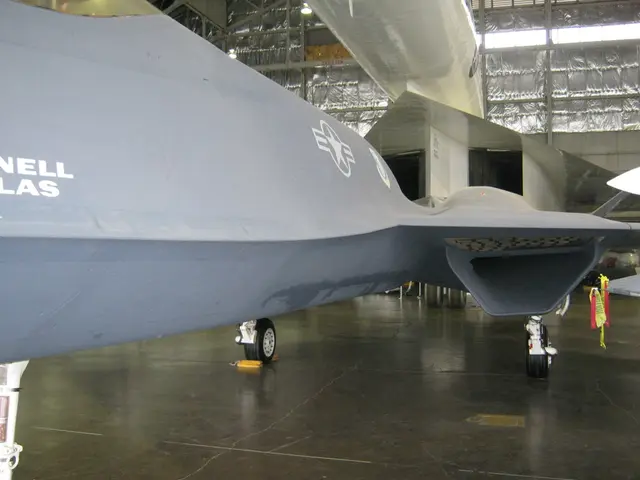Starbucks relinquishes control in China - A potential blueprint for American corporations?
Starbucks has announced that it will sell a significant portion of its China business to a local partner or financial investor. This move is part of the company's strategic overhaul, as it seeks to partially realise its bet on growth in China while releasing capital from a market that has become more challenging.
The strategic value of Starbucks' China business has been recognised by several potential buyers, including private equity investors, local partners, and companies like Tencent. Interested parties also include Carlyle, EQT, Primavera Capital, HongShan Capital, and Boyu Capital.
The new majority owner might have more room to test aggressive pricing strategies and trial new formats in smaller cities, potentially bringing better access to these markets, digital channels, and consumer trends. This transformation of Starbucks' engagement in China from a pure growth bet to a participation model is aimed at consuming less capital and cushioning risks.
Starbucks' decision comes amidst stiff competition from local players like Luckin Coffee and smaller chains such as Manner or Mixue, which have undermined the company's position. In response, Starbucks has lowered prices for individual drinks and introduced more locally tailored products, but these efforts have not been enough to alleviate structural pressure.
The sales process is being facilitated by Goldman Sachs, with several investors from the U.S., Europe, and China involved. The valuation of the business is up to five billion dollars, roughly ten times the expected 2025 EBITDA.
One bidder has offered a higher multiplier, indicating that the market still considers the business attractive despite weaker prospects. The interested party that offered a higher valuation multiple in the negotiation to take over the leading role in Starbucks' China business was EQT among the final bidders, as reported in September 2025.
However, there is a risk of quality compromises if operational leadership lies with the partner, as Starbucks has always occupied the premium segment. The success of Starbucks in China will depend on whether the new partner better caters to the needs of Chinese consumers and whether Starbucks retains enough influence to ensure its brand promise.
Such a move could be perceived as weakness, potentially damaging Starbucks' brand image. Nevertheless, Starbucks' strategy aligns with a series of Western companies that have had to adjust their presence in China, but Starbucks emphasises that it's not fully leaving.
In 2017, Starbucks paid around 1.3 billion U.S. dollars to buy out its mainland China joint venture partner, gaining full control and aggressively driving expansion. At the time, the goal was to reach 5,000 stores by 2021, but Starbucks has over 7,800 stores today.
This transformation marks a shift in Starbucks' strategy in China, aiming for a more sustainable growth model while preserving its brand image and maintaining a significant minority stake in the business. The company will retain the roasting operations that oversee quality control and brand image.
In conclusion, Starbucks' decision to sell a majority stake in its China business to a local partner or financial investor is a strategic move aimed at navigating the challenging market conditions in China while preserving its brand image and maintaining a significant presence in the market. The success of this move will depend on the ability of the new partner to cater to the needs of Chinese consumers and Starbucks' ability to retain enough influence to ensure its brand promise.
Read also:
- Potential Consequences of Dismantling FEMA Vary Across States
- Railway line in Bavaria threatened by unstable slope - extensive construction site at risk
- Wind Farm Controversy on the Boundary of Laois and Kilkenny
- Puerto Rico's Climate Lawfare Campaign experiences another setback with the dismissal of its deals.




